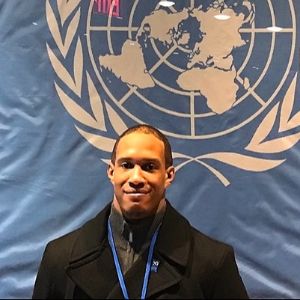This summer has seen renewed fighting in Ethiopia, which is ongoing in the Amhara region. Stemming from a dispute over disarming regional militias into the Ethiopian National Defense Forces, the Amhara region is now witnessing fierce combat that could ignite the country’s second civil war within this decade.
Despite ongoing fighting since the summer, tensions have stemmed from the Tigray War and beyond to the late 70s. Ethiopia’s prior three ruling governments have failed to realize why the Amhara region feels the need to arm itself, and their lack of detail has put the country on a downward spiral of ethnic tensions across the ancient East African nation.
Ongoing Fighting in the Amhara Region
The conflict between the ENDF and the Amhara Special Forces, along with the Fano militia, escalated in early August following months of unsuccessful negotiations. Seeing a surrender of their weapons as submission to an ethnic Oromo majority government that has shown bias against the Amhara, the regional militias set up their own de jure administration.
Using adjacent methods of indiscriminate air power via TB2 Bayraktar drones, a devastating strike killed scores of people in Finote Salem on Aug. 14. Further airstrikes have been reported, and according to the United Nations, at least 183 people have been killed in the fighting. The number could be higher as Addis Ababa has restricted the media from carrying out a growingly inhumane campaign.
Historical Context of the Amhara Militias
The primary militia fighting Abiy Ahmed’s forces is the Fano militia. Stemming back to the 1930s, Fano, also known as ‘volunteer fighters,’ opposed Mussolini’s Italy during the 1935 invasion and occupation of Ethiopia until its liberation in 1941.
The Fano would become a symbolic means of resistance against occupiers and seeing the Tigray People’s Liberation Front and Abiy’s government as another oppressor, the militia would become vital to the perseverance of the Amhara people once again.
The Federal Government Fails to Clamp Down on Extremist Organizations
The Amhara people have prioritized their defense forces as the central government of Addis Ababa has continuously failed the country. Amhara militias initially supported the federal government’s war against the TPLF’s armed wing, the Tigray Defense Forces. The Amhara region saw a regional defense force that continuously clashed with them as a threat and, therefore, supported Abiy Ahmed’s military campaigns faster; a string of attacks against ENDF bases ignited the Tigray War.
During the Tigray War, the TDF captured thousands of ENDF soldiers and marched into the Amhara region. The ENDF withdrew to the capital and left the Amhara Special Forces and Fano to fight the more heavily armed and equipped TDF for several months.
It was not until the TDF threatened to advance into the capital that Ahmed drew a red line and mustered a massive counterattack that forced the Tigray militia back into their regional borders. By then, the Amhara region was devastated, with hundreds of thousands of dead—most being Amhara and Tigray militiamen.
The war was a victory for the regional government but not for the Amhara people, who had no seat in the African Union-backed peace process and were significantly weakened during the fighting. To this day, both the Amhara and Tigray regions have not fully recovered from the two-year war. At the same time, the capital, the power base of the Oromo-led government, continues to develop.
Ethnic Tensions Spiraling Out of Control
Tensions between the Amhara and the federal government now stem towards political and ethnic favoritism, which Ethiopia has struggled with throughout its rich history. For several years, an extremist organization known as the Oromo Liberation Front has killed thousands of Amhara civilians, primarily in the Oromia region, to create a more significant state for themselves.
Oromos dominate Abiy’s government, and compared to the response against Tigray militias, the Ethiopian Prime Minister has rarely addressed the massacres inflicted by the Oromo terrorist organization. Stemming from the fall of the Solomonic Dynasty, Amharas have been continuously persecuted by several regimes known as the Amhara Genocide.
Initially politically represented and holding key positions within the monarchy, Amharas have had little to no representation of the government in the Derg junta, TPLF, and Abiy Ahmed governments that followed Haile Selassie’s overthrow. Along with the exclusion of Amharas from the government, there have also been numerous arrests of their dissidents, political activists, and community leaders.
Addis Ababa’s current impasse reflects the original failed negotiations with the TPLF leadership—a failure of adequate and equal representation. As ethnic federalism became a cause of conflict in the early 90s, the current ruling government has failed to address the system that exacerbated ethnic conflicts, and the more neglect towards these policies, the more Ethiopia could suffer perpetual ethnic violence.
Despite having a Nobel Peace Prize for mitigating a decades-long border conflict with Eritrea, Abiy Ahmed has failed to unite his country of Ethiopia. By not addressing the security concerns of Amhara civilians, their militias are the only means of protection from their growingly persecuted peoples from conflicts with other ethnic groups and the federal government unless Ahmed finally addresses the policies he has glossed over.
[Photo by BeteAmora, via Wikimedia Commons]
The views and opinions expressed in this article are those the author.

Julian McBride is a forensic anthropologist and independent journalist born in New York. He is the founder and director of the Reflections of War Initiative (ROW), an anthropological NGO which aims to tell the stories of the victims of war through art therapy. As a former Marine, he uses this technique not only to help heal PTSD but also to share people’s stories through art, which conveys “the message of the brutality of war better than most news organizations.”

